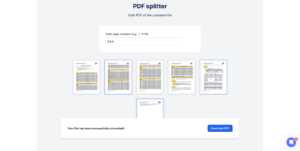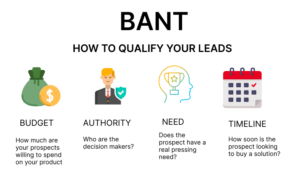
Accounts Payable teams have an incentive to delay payments until the last acceptable dates. This allows for a high cashflow and treasury management. However, this isn't universally true.
Long cash conversion cycles and cashflow constraints can be a bottleneck for various vendors. They provide early payment discounts to customers to improve their cashflow. This can be quite lucrative and can enable clients to save more money. It's a win for both the vendor and the client AP team. This has other benefits like stronger vendor relationships and preferred terms on the deal.
Let's understand more about Early Payment discounts, types, benefits and how to streamline them:
What is an Early Payment Discount?
An early payment discount is a reduction in the price of a product or service that is offered to customers who pay for the item early. The idea behind this type of discount is to encourage customers to make their payment as soon as possible, which can help businesses to avoid financial difficulties later on.
Suppliers can also impost late payment penalties for payment beyond a certain date. AP teams can avoid this by early payments. The discounts can range from 1% to 5% but varies based on the industry and vendor relationship.
There are a few different ways that businesses can offer early payment discounts, such as offering a reduced price for items paid for within a certain time frame, or giving a percentage off of the total amount owed. Early payment discounts can be a great way to save money on your purchase, but it's important to make sure that you understand the terms and conditions before you agree to anything.
Types of Early Payment Discount
There are several different types of early payment discounts, so it's important to understand the differences before you choose one.
- Static Discount: This is the most common early payment discount type. Suppliers offer a percentage reduction in the invoice amount (e.g., 2% or 3%) when customers pay their invoices early, typically within a specified number of days.
For example, if you supplier offers a 2% discount for paying in the first 10 days of a month, they would invoice it as 2/10 - net 30.
Here's how it works :
• If you pay within the first 10 days:
You get a 2% discount on the invoice amount of $1,000.
Discount = 2% of $1,000 = 0.02 * $1,000 = $20.
So, you can pay $1,000 - $20 = $980 within the 10-day period to avail of the discount.
• If you pay after the 10-day period but before the net 30 days:
You don't get the 2% discount.
You pay the full $1,000 within the 30-day period.
So, this example illustrates how the terms "2/10 - net 30" work, and it's a common practice in business to incentivize early payments and manage cash flow.
- Fixed Amount Discount: Some suppliers offer a fixed dollar amount discount (e.g., $50) for early payment, regardless of the invoice's total amount.
- Dynamic Discounting: Dynamic discounting allows customers to choose their payment terms and associated discounts within certain limits, providing flexibility in managing cash flow. This is usually negotiated on an invoice-by-invoice basis. An example of dynamic discounting:
• For payments made within 10 days: 5% discount
• For payments made from 11 days to the 20th day: 3% discount
• For payments made from 21 days to the 30th day: 1% discount
The client can choose to make the payment terms as required. This requires active management from the Accounts Payable team. They need to maximise efficiency while considering their outstanding payments and recieveables.
When it comes to early payment discounts, there are a variety of options available. It's important to compare the different types of discounts and choose the one that will save you the most money.
Benefits of Using Early Payment Discounts
There are several benefits of using early payment discounts, including:
- Improved Cash Flow
If you’re a small business owner, you know that cash flow is king. Maintaining a positive cash flow is essential to keeping your business afloat and ensuring that you can meet your financial obligations. Offering early payment discounts can help improve your business’s cash flow. When you get paid on your invoices early, you’re able to free up cash that can be used to pay other bills or reinvest back into your business.
- Reduced Costs
Paying early can also help you save money on your purchases. By taking advantage of early payment discounts, you can reduce the amount you have to pay for goods and services, which can help improve your bottom line. For vendors, early payment means that you do not have to rely on line-of-credits which can be expensive and unreliable.
- Builds Goodwill with Suppliers
Paying your invoices early can also help build goodwill with your suppliers. When you show that you’re a reliable customer who pays on time, suppliers may be more likely to offer you favorable terms in the future, such as extended payment terms or quantity discounts.
- Avoids Late Payment Fees
Paying your invoices on time can also help you avoid late payment fees, which can further eat into your profits. By taking advantage of early payment discounts, you can ensure that you always pay your bills on time and avoid these costly fees.
If you’re looking for ways to improve your business’s cash flow, consider taking advantage of early payment discounts. These discounts can offer significant benefits and help you keep more cash in your pocket.
Challenges Associated with Early Payment Discounts
While early payment discounts can be a helpful way to improve cash flow, they can also present some challenges. First, it can be difficult to track which invoices are eligible for an early payment discount and when the discounts expire. This can lead to missed opportunities to take advantage of the discount, or worse, paying the full amount when a discount was available. Second, early payment discounts can create tension between customers and suppliers. Some customers may feel like they are being pressured to pay invoices early, while others may feel like they are being penalized for paying on time. Finally, early payment discounts can complicate accounting and tax compliance. For example, if an invoice is paid early, but the goods or services are not received until after the discount period expires, the transaction may need to be recorded as two separate transactions (one for the sale and one for the payment).
If you are considering using early payment discounts, it is important to weigh the potential benefits and challenges carefully. Make sure you have a system in place to track eligible invoices and keep track of when discounts expire. And be prepared to manage customer relationships proactively to avoid any potential misunderstandings.
Streamlining Payment Management with Automated Solutions:
To effectively address the challenges associated with payment tracking, businesses can leverage advanced automated solutions that offer seamless integration, accurate data processing, and efficient workflows. Here's how these solutions can revolutionize your payment management:
• Invoice Processing with OCR: Optical Character Recognition (OCR) technology allows scanning documents like invoices, receipts or bills to extract the relevant information using AI. This not only speeds up the payment initiation process but also reduces the chances of errors due to manual handling. You can read our blog to find the best OCR for your needs!
• Tracking Bills from Initiation to Completion: One of the key advantages of automation is its ability to track bills from the moment they enter the system to their ultimate completion. This end-to-end tracking ensures transparency and visibility throughout the payment lifecycle, allowing stakeholders to monitor the progress of each bill and address any potential issues promptly.
• Seamless Integration with Accounting Software: Automation solutions can seamlessly integrate with popular accounting software systems, such as QuickBooks Online, for efficient payment management. This integration ensures that all payment data is synchronized accurately, eliminating the risk of disjointed records or reconciliation challenges.
• Automated Data Validation and Checks: Flow by Nanonets, powered by AI, goes beyond simple data extraction by performing automated data validation. This ensures that extracted information matches predefined criteria and adheres to specific business rules. This advanced feature helps identify and rectify discrepancies before the payment process begins, further enhancing accuracy.
Schedule a demo with Flow by Nanonets today:
• Accelerated Payment Execution: Once a bill is approved, automated solutions like Flow by Nanonets can seamlessly trigger payment execution through preferred methods such as ACH, wire transfer, or online payment platforms. This eliminates manual intervention and the need for multiple systems, streamlining the process and minimizing delays.
• Approval Workflow Optimization: Automated solutions facilitate custom payment workflows, ensuring that the approval process aligns with your organization's specific needs. Flow by Nanonets, for example, enables you to configure approval routing based on spend policies, reducing bottlenecks and accelerating decision-making.
- SEO Powered Content & PR Distribution. Get Amplified Today.
- PlatoData.Network Vertical Generative Ai. Empower Yourself. Access Here.
- PlatoAiStream. Web3 Intelligence. Knowledge Amplified. Access Here.
- PlatoESG. Carbon, CleanTech, Energy, Environment, Solar, Waste Management. Access Here.
- PlatoHealth. Biotech and Clinical Trials Intelligence. Access Here.
- Source: https://nanonets.com/blog/early-payment-discount/
- :has
- :is
- :not
- $UP
- 000
- 10
- 11
- 13
- 19
- 2%
- 20th
- 27
- 30
- 30th
- 8
- a
- ability
- Able
- About
- accelerated
- accelerating
- acceptable
- Accounting
- accounting software
- Accounts
- accounts payable
- accuracy
- accurate
- accurately
- ach
- active
- address
- advanced
- ADvantage
- advantages
- After
- AI
- Aligns
- All
- Allowing
- allows
- also
- always
- amount
- an
- and
- any
- anything
- approval
- approved
- ARE
- AS
- associated
- automate
- Automated
- Automation
- available
- avoid
- back
- based
- basis
- BE
- before
- behind
- being
- benefits
- BEST
- between
- Beyond
- Bill
- Bills
- Blog
- both
- bottlenecks
- Bottom
- build
- business
- business owner
- businesses
- but
- by
- CAN
- carefully
- Cash
- cash flow
- certain
- challenges
- chances
- character
- character recognition
- Checks
- Choose
- client
- clients
- comes
- Common
- compare
- completion
- compliance
- conditions
- Consider
- considering
- constraints
- Conversion
- costly
- create
- criteria
- custom
- customer
- Customers
- cycles
- data
- data processing
- Date
- Dates
- day
- Days
- deal
- Decision Making
- delay
- delays
- Demo
- differences
- different
- difficult
- difficulties
- Discount
- discounts
- do
- documents
- Dollar
- don
- due
- dynamic
- e
- each
- Early
- eat
- effectively
- efficiency
- efficient
- eligible
- eliminates
- eliminating
- enable
- enables
- encourage
- end-to-end
- enhancing
- ensure
- ensures
- ensuring
- Enter
- Errors
- essential
- example
- execution
- expensive
- extract
- extraction
- facilitate
- favorable
- Feature
- feel
- Fees
- few
- Finally
- financial
- Find
- First
- fixed
- Flexibility
- flow
- For
- FRAME
- Free
- from
- full
- further
- future
- get
- Giving
- Goes
- goods
- Goodwill
- great
- Handling
- Have
- help
- helpful
- helps
- here
- High
- How
- How To
- However
- HTTPS
- idea
- identify
- if
- illustrates
- important
- improve
- in
- Incentive
- incentivize
- Including
- industry
- information
- integrate
- integration
- intervention
- into
- invoice processing
- isn
- issues
- IT
- items
- ITS
- Keep
- keeping
- Key
- King
- Know
- Last
- Late
- later
- lead
- Leverage
- lifecycle
- like
- likely
- limits
- Line
- looking
- lucrative
- made
- maintaining
- make
- manage
- management
- managing
- manual
- matches
- May..
- means
- Meet
- methods
- minimizing
- missed
- moment
- money
- Monitor
- Month
- more
- most
- multiple
- Need
- needs
- negotiated
- net
- number
- obligations
- OCR
- of
- off
- offer
- offered
- offering
- Offers
- on
- ONE
- online
- only
- opportunities
- optical character recognition
- optimization
- Options
- or
- organization
- Other
- Others
- our
- outstanding
- owed
- owner
- paid
- Pay
- paying
- payment
- payments
- pays
- penalized
- percentage
- performing
- period
- Place
- Platforms
- plato
- Plato Data Intelligence
- PlatoData
- policies
- Popular
- positive
- possible
- potential
- powered
- practice
- preferred
- prepared
- present
- price
- process
- processing
- Product
- profits
- Progress
- provide
- providing
- purchase
- purchases
- quantity
- Quickbooks
- quite
- range
- Read
- receipts
- received
- recognition
- reconciliation
- recorded
- records
- reduce
- Reduced
- reduces
- reducing
- reduction
- Regardless
- reinvest
- relationship
- Relationships
- relevant
- reliable
- rely
- required
- requires
- revolutionize
- Risk
- routing
- rules
- s
- sale
- Save
- scanning
- seamless
- seamlessly
- Second
- separate
- service
- Services
- several
- show
- significant
- Simple
- small
- small business
- So
- Software
- Solutions
- some
- Soon
- specific
- specified
- speeds
- spend
- stakeholders
- streamline
- streamlining
- stronger
- such
- supplier
- suppliers
- sure
- system
- Systems
- T
- Take
- taking
- tax
- team
- teams
- Technology
- terms
- terms and conditions
- that
- The
- The Future
- their
- Them
- There.
- These
- they
- this
- Through
- throughout
- time
- to
- today
- Total
- track
- Tracking
- transaction
- Transactions
- transfer
- Transparency
- treasury
- trigger
- true
- two
- type
- types
- typically
- ultimate
- understand
- universally
- Unsplash
- until
- used
- using
- usually
- validation
- variety
- various
- vendor
- vendors
- visibility
- was
- Way..
- ways
- weigh
- What
- What is
- when
- which
- while
- WHO
- will
- win
- Wire
- with
- within
- Work
- workflow
- workflows
- works
- worse
- would
- you
- Your
- zephyrnet













